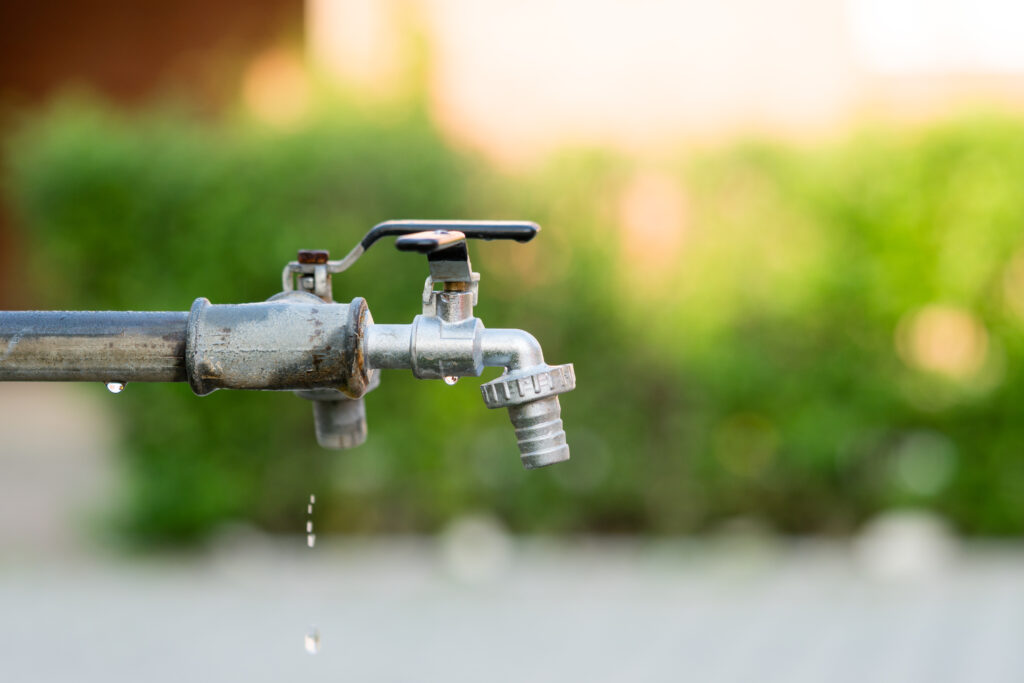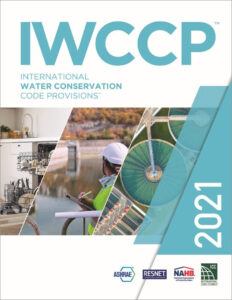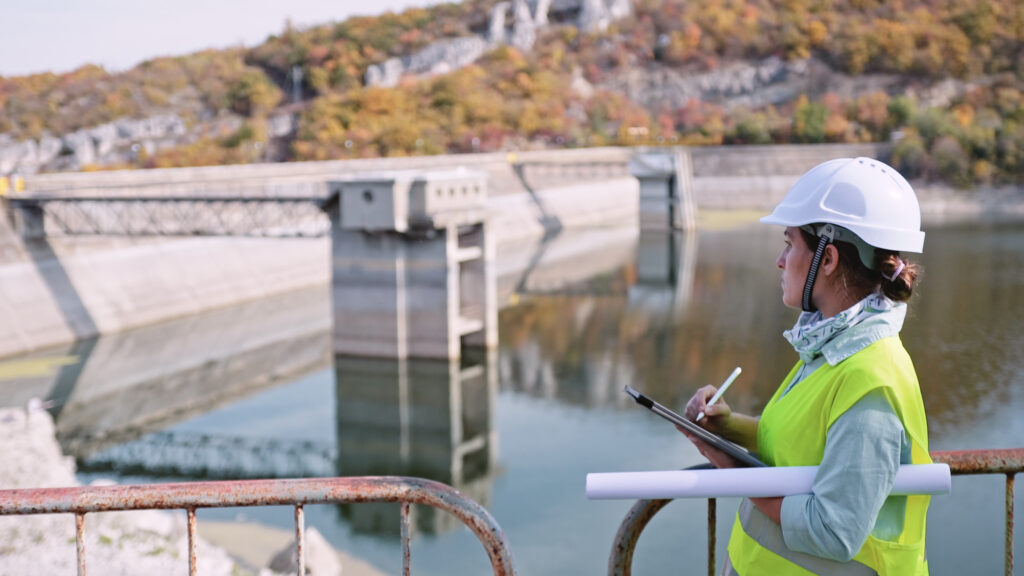
Standard 850 and Beyond: Water Conservation Efforts Through the Code Council
The International Code Council and RESNET lead efforts to support water conservation and combat water scarcity.
In June, Arizona Governor Katie Hobbs announced a pause on new subdivisions in Phoenix suburbs that do not already have proven water supplies. Some of the towns impacted are among the fastest-growing regions in the country.
Water scarcity and an aging water infrastructure are leading to increases in water rates which are up more than 30 percent in a decade.
Standard 850
The International Code Council partnered with the Residential Energy Services Network (RESNET®) to develop ANSI/RESNET/ICC Standard 850 to address the growing need to measure water efficiency in homes.
The first version of the standard was published in 2020 and covers one- and two-family dwellings, including townhomes. The standard took more than four years to develop, including three rounds of public comments and input from more than 75 experts on the original technical advisory committee.
Standard 850 provides for the calculation of a water rating index that allows homeowners, builders and local officials to understand the relative water use performance of a home. The index goes from zero to 100, where a lower score means less water usage.
The standard covers water usage for:
- Toilets
- Kitchen and bath faucets
- Showerheads
- Clothes washers
- Dishwashers
- Water softeners
- Irrigation systems/landscaping
- The presence or absence of a pool or spa

There are additional factors that also influence the rating, including water pressure, house size, geographic location, number of bedrooms, lot and landscape size and hot water distribution layout.
RESNET and the Code Council are currently working on the development of the next version of Standard 850 which will include provisions for rating the water use performance of multi-family dwelling units.
SEE RELATED: The Code Council and RESNET Water Rating Index Standard approved by the American National Standards Institute
RESNET created its HERSH2O® Whole-House Water Efficiency Rating program based on Standard 850. HERSH2O is recognized by the U.S. Environmental Protection Agency (EPA) as a WaterSense Approved Certification Methodology. Homes that achieve a HERSH2O score of 70 or less and meet simple requirements can become eligible to earn the WaterSense Label. To date, more than 5,000 homes have achieved the WaterSense Label using HERSH2O.
Beyond Standard 850: Code Council Efforts to Support Water Conservation
Like RESNET, the Code Council continues to lead efforts that support water conservation in the built environment through code and standard development.
In October 2023, the Code Council released the International Water Conservation Code Provisions® (IWCCP®), a comprehensive resource that contains the water conservation-related provisions from the 2021 International Codes® (I-Codes) in one document.

Additionally, the IWCCP includes standards developed by the Code Council as well as excerpts of the water conservation provisions:
- ASABE/ICC 802-2020 Landscape Irrigation Sprinkler and Emitter Standard
- ANSI/RESNET/ICC 850-2020 Standard for the Calculation and Labeling of the Water Use Performance of One- and Two-Family Dwellings Using the Water Rating Index
- ICC 700-2020 National Green Building Standard®
The IWCCP is organized such that it provides the best and most comprehensive tool for the design, installation and administration of potable and non-potable water conservation and efficiency systems.
SEE RELATED: International Code Council Releases 2021 International Water Conservation Code Provisions®
In addition to the IWCCP and the standards referenced within, the Code Council developed CSA B805/ICC 805 – Rainwater Harvesting Systems . This standard applies to the design, materials, installation and operation of rainwater harvesting systems for both potable and non-potable applications.

SEE RELATED: Updated Rainwater Harvesting Standard: Conserving Water for the Long Run
Code Council Solutions to Address Water Scarcity
To help combat the rising global issue of water scarcity, the Code Council is at the forefront of new solutions. The Code Council’s Plumbing Mechanical and Fuel Gas (PMG) Code Action Committee has convened a water reuse working group to facilitate onsite water reuse through the International Residential Code® (IRC®) and International Plumbing Code® (IPC®). The group’s recommendations will be considered during the 2027 I-Code update process, which begins next year.
This process incorporates stakeholder feedback from across the industry including contractors, design professionals, regulatory agencies, industry partners, listing agencies and accredited testing labs.
The Code Council is also actively working on the development of Standards ICC 815 and ICC 825.
ICC 815 – Standard for Sizing Water Distribution, Sanitary Drainage and Vent Piping Systems
This ANSI standard will establish a comprehensive global methodology for sizing water distribution, sanitary drainage and vent piping systems in all types of residential occupancies including mixed-use (which includes both businesses and residences in a single building) and institutional (e.g., dormitories).
This standard—coupled with other Code Council solutions (e.g., IPC/IRC limitations on the distances between plumbing fixtures and the water heater to ensure that hot water is delivered in a timely manner) and with U.S. EPA WaterSense requirements for plumbing fixture fittings like faucets and showerheads—will provide a comprehensive approach to truly saving water indoors.
Though the voting members of the standard have been decided, one can still be involved by participating in a working group to develop the provisions of the standard.
ICC 825 – Standard for Onsite Wastewater Treatment Systems
This standard will establish a global methodology for the design, installation, construction and maintenance of domestic onsite wastewater disposal and treatment systems. ICC 825 pairs with ICC 815 as it addresses the sanitary drainage side of a plumbing system for those residences that do not connect to a public sewer system.
As with ICC 825, interested parties can participate in one of many working groups to develop the provisions of the standard.
For both ICC 815 and ICC 825, the Code Council is working with many international partners—including Australia, New Zealand, Germany, Pakistan and the United Kingdom—to ensure the standard has a meaningful global reach.
Water Conservation Provisions in the 2024 I-Codes
Water conservation continues to be an important concept in code development. The following are highlights from the 2024 I-Codes.
- The 2024 IPC and 2024 IRC are the only model plumbing codes in the US that allow for the use of 3/8 water lines. Table 604.5 of the 2024 IPC and its footnotes detail the minimum pipe size to a fixture location based on type of fixture. These requirements lead to smaller pipe sizes in water distribution systems, furthering water conservation efforts, installation time and cost.
- The 2024 IPC and 2024 IRC also limit the distance from the hot water source to the fixture location. This provision saves water by not wasting water while waiting on hot water to be delivered to the fixture location.
- Provisions in Section C404 the 2024 International Energy Conservation Code® (IECC®) further limit the distance to certain fixture locations in commercial buildings. These requirements promote water conservation by ensuring that the design and installation takes a holistic approach. The 2024 IECC will be available in spring 2024.
- The International Green Conservation Code (IgCC) provides a complete system approach to the design, construction, and operation of buildings that results in better indoor environments and lower impact on natural resources, such as water. The 2024 IgCC will be available in spring 2024.

Learn more about how PMG codes are a vital part of a complete building safety system, here.








